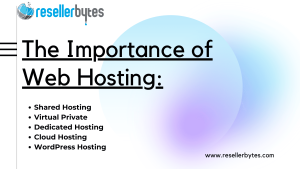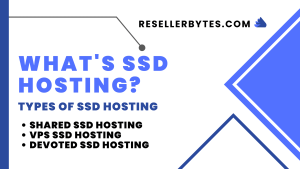Empathy in Web Design: The What, the How and the Why
If you’ve read a number of my previous articles, you’ve in all likelihood observed my apparent love for Psychology and my consistent endeavor to highlight the psychology in different regions like advertising, improvement, checking out etc. The more I’ve explored those regions, the more you’ve read about it on the ResellerBytes blog ?
This time, I’ve been attracted to empathy in the layout.

What is empathy in layout?
Empathy, inside the way we are aware of it, is the understanding of another’s feelings. Empathy in internet layout is a design centric technique to paying attention to the user’s emotions closer to a product. It’s knowledge what the user certainly feels and thinks approximately your product. The cognizance is on consumer’s desires, – feelings, stories & outcomes. This also consists of difficulties they may face, how lengthy they take to attain a preferred goal, ease of navigation and so forth.
Why is empathy essential?
Empathy facilitates:
- Increase open-mindedness
- Reduce bias
- Collaborate with different research individuals and
- Accept & validate your very own observations
Empathy facilitates enhance user enjoy through statement and analysis of the consumer’s revel in of your product. You can greatly improve the designs you create if you empathize, giving you an edge over competition.
How must you empathize?
The manner of empathizing in layout follows sure steps:
Step 1: Observe: Take time to look at the customers of your product in their herbal surroundings. While you’re gazing, hold in mind the matters to record like:
- Ease of use of the product
- Usability of the product
- How lengthy the consumer takes to reach his/her desired purpose
- Problems the person faces
- Methods & tactics
- Alternative answers
Let’s take an instance in which you’re the consumer, I am the fashion designer, developer, tester. Say, I gave you a internet site like Canva and requested you to create an invite for a brunch celebration you were to host, I’d observe things like:
- If the navigation was easy enough to guide you to the templates for the invites
- If you are capable of add pix of your desire
- If the ‘crop picture’ alternative turned into smooth to find
- If you satisfactorily created an invite you liked
Step 2: Capture Data: Observation brings us to step 2 of the technique which is capturing statistics or recording your observations. This can be thru audio or video recordings or even truely, notepad information. The purpose of this step is simplest to seize facts and not to analyse simply yet.
Continuing with the Canva example, here I because the developer could seize records like:
- Were the template alternatives too many?
- Was it causing you confusion?
- Time taken to discover the ‘Upload picture’ button
- Time it took you to successfully create an invite
Step 3: Analyse: In this step, examine the statistics you accumulated in step 2. This step is vital to apprehending the user’s wishes, emotions & pain factors. Take time to peer issues from all views and not rely completely on yours alone. This step is the most important in empathy.
With the information I captured in Step 2, I’d examine in the following manner:
I be aware it took you 20 seconds to discover the ‘Upload image’ option. It will be that the choice is either now not seen, cluttered with different buttons or the icon I’ve used does not carry an movement of ‘add’.
I’d additionally examine my records and analyse other hassle regions. These questions may assist:
- How does the problem encountered have an effect on the person?
- Do different users face the same difficulty?
- What desires to trade to avoid this trouble?
- How does this trouble affect our purpose?
Step 4: Brainstorm for solutions: Brainstorming is a loose-flowing workout of tossing about ideas and answers in a given setting with a given organization. This step follows the ‘Analysis’ step wherein the empathizing takes location. The idea is now which you’ve empathized, search for answers to deal with the consumer’s ache points.
Now that I’ve recognized your ache point with the ‘Upload picture’ button, I’d brainstorm with possible solutions to make the button greater distinguished by way of:
- Changing the colour of the button to make it stand out
- Changing the icon
- Placing the button away from other buttons
Step 5: Execute: Now which you’ve got the solutions, it’s time to put it into check. This step includes bringing the thoughts from the preceding step into movement. The formerly mentioned solutions are placed to the test. According to Leonard and Rayport (in Spark Innovation Through Empathic Design), there are 3 one-of-a-kind reasons for conducting prototype trying out in an empathic layout technique:
- clarification of the central idea of the product for the development crew
- permitting the crew to proportion the present day layout with individuals who do now not work inside the capabilities included by means of that precise crew
- the potential for further upgrades once tested with actual clients and following discussions with the goal customers
Once I’ve figured my solutions to the trouble, I execute the action plan I determined in Step four. I run it past some greater users to perceive if the time is taken to find the ‘Upload snapshots’ button decreased. If so, I’ve efficaciously controlled to pick out, seize, analyze, brainstorm & provide you with an empathetic solution for your hassle.
Conclusion: Is Empathy Enough?
But is empathy enough? Empathy along side layout thinking is being touted as one of the key traits that sets designers apart. There’s no doubt the 2 are crucial but empathy is only one step within the more design manner.
Empathy may want to cause fallacious design is if used because the best tenet. This is due to the fact, empathy based handiest on a few users’ reports of the product or in an unnatural surroundings should provide you with effects that may not be relevant for other customers. It’s vital to have your factor of view as properly. Probably get other researchers concerned as nicely.
The first-rate form of designs integrate the information of a user’s needs within a specific context & with an opinionated viewpoint.
Share this content:














Post Comment